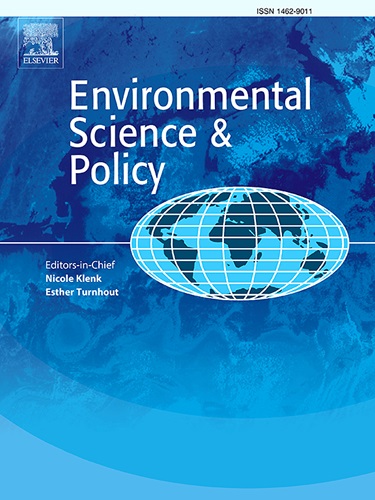创新与适应:应对恒河三角洲的危机
IF 5.2
2区 环境科学与生态学
Q1 ENVIRONMENTAL SCIENCES
引用次数: 0
摘要
人类面临的危机日益增多。人类如何适应这样的危机?为了适应危机,人类需要培养哪些因素?最近的研究表明,创新就是其中一个因素。然而,关于创新与适应之间相互关系的实证研究有限。面对“多重互动”危机,只有少数研究探讨了创新与适应的关系。因此,本研究利用耦合的社会-生物-物理系统方法,通过关注受气候变化、盐度入侵和授粉严重影响的恒河三角洲孟加拉国库尔纳地区,并利用综合方法,结合对330户家庭的访谈、空间制图、二次数据分析和先进的回归技术,考察了创新能力和适应能力之间的联系。研究表明,创新能力越强的农户适应能力越强,特别是在盐沉动态复杂的地区。本研究强调了促进基层创新的重要性,从而使边缘化社区能够应对危机,并强调了有针对性的政策干预的必要性,以支持地方创新,从而在面临不断升级的社会、环境和人道主义挑战时实现有弹性和可持续的生计。本文章由计算机程序翻译,如有差异,请以英文原文为准。
To innovate and to adapt: Tackling crises in the Ganges delta
The list of crises facing humanity grows longer every day. How can humanity adapt to such crises? What factors does humanity need to nurture for adapting to crises? Recent research suggests that innovation is one such factor. Nonetheless, empirical research on the interconnections between innovation and adaptation is limited. Only a few studies may have explored the innovation-adaptation relationship in the face of “multiple interacting” crises. Therefore, drawing on the coupled, social-biophysical systems approach, this study examines the link between innovation capacity and adaptive capacity by focusing on the Khulna division of Bangladesh in the Ganges delta, a region severely impacted by climate change, salinity intrusion, and polderization and utilizing a comprehensive methodology that combines interviews with 330 households, spatial mapping, secondary data analysis and advanced regression techniques. This study reveals that households with higher innovation capacity exhibit enhanced adaptive capacity, particularly in areas characterized by complex salinity-sedimentation dynamics. This study contributes to the growing body of literature in sustainability science by highlighting the importance of fostering grassroots innovation so that marginalized communities can tackle crises and emphasizing the need for targeted policy interventions that support local innovation, leading to resilient and sustainable livelihoods in the face of escalating social, environmental, and humanitarian challenges.
求助全文
通过发布文献求助,成功后即可免费获取论文全文。
去求助
来源期刊

Environmental Science & Policy
环境科学-环境科学
CiteScore
10.90
自引率
8.30%
发文量
332
审稿时长
68 days
期刊介绍:
Environmental Science & Policy promotes communication among government, business and industry, academia, and non-governmental organisations who are instrumental in the solution of environmental problems. It also seeks to advance interdisciplinary research of policy relevance on environmental issues such as climate change, biodiversity, environmental pollution and wastes, renewable and non-renewable natural resources, sustainability, and the interactions among these issues. The journal emphasises the linkages between these environmental issues and social and economic issues such as production, transport, consumption, growth, demographic changes, well-being, and health. However, the subject coverage will not be restricted to these issues and the introduction of new dimensions will be encouraged.
 求助内容:
求助内容: 应助结果提醒方式:
应助结果提醒方式:


